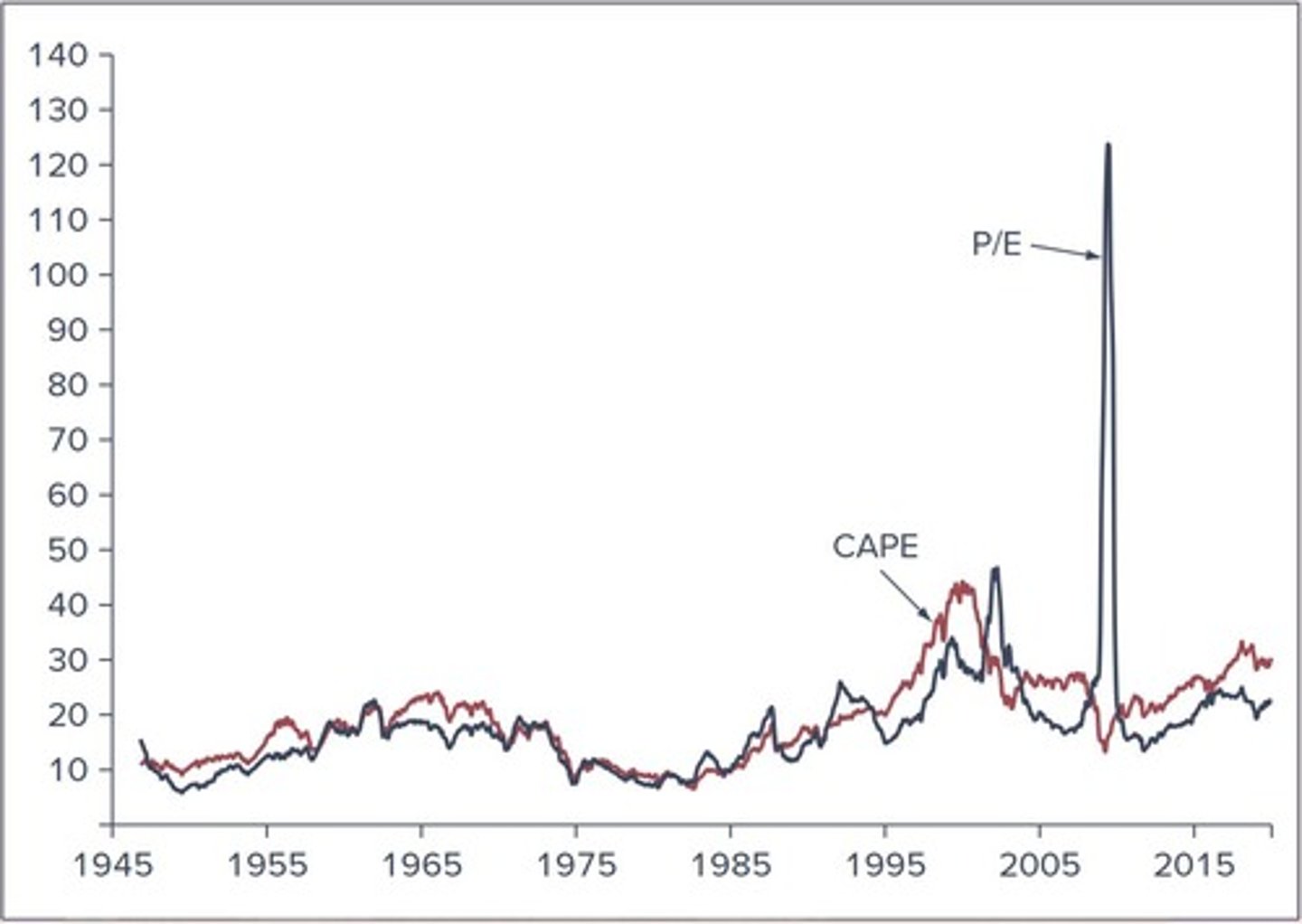Equity Valuation in IM Exam 2
1/101
There's no tags or description
Looks like no tags are added yet.
Name | Mastery | Learn | Test | Matching | Spaced |
|---|
No study sessions yet.
102 Terms
Equity Valuation
Process of determining a stock's intrinsic value.
Dividend Discount Model
Valuation method using expected dividends and discount rate.
Price-Earnings Ratio
Valuation ratio comparing a company's share price to earnings.
Free Cash Flow Analysis
Evaluation of cash generated after capital expenditures.
Holding Period Return
Total return from holding an investment over time.
Required Rate of Return
Minimum return expected from an investment.
CAPM
Model to determine required return based on risk.
Intrinsic Value
True value of an asset based on fundamentals.
Market Price
Current trading price of a stock in the market.
Book Value
Net worth of equity calculated from balance sheet.
Liquidation Value
Net amount from selling assets after debts.
Replacement Cost
Cost to replace a firm's assets with new ones.
Earnings Yield
Earnings per share divided by stock price.
Dividend Yield
Annual dividends per share divided by stock price.
Capital Gains Yield
Rate of price appreciation of an investment.
HPR Formula
HPR = (E(P1) - P0 + E(D1)) / P0.
E(D1)
Expected dividends for the next period.
E(P1)
Expected stock price in the next period.
k (Market Capitalization Rate)
Expected return based on risk-free rate and beta.
V0
Present value of expected future cash flows.
Underpriced Stock
When intrinsic value exceeds market price.
Overpriced Stock
When market price exceeds intrinsic value.
Dividend Discount Model (DDM)
Valuation method using future dividend present value.
Intrinsic Value
Present value of expected future cash flows.
Constant-Growth DDM
Assumes dividends grow at a constant rate.
Stable Growth Formula
Dt = D0(1 + g)t for dividends.
Intrinsic Value Equation
V0 = D0(1 + g) / (k - g).
No-Growth Stock
Valued like a perpetuity with D1.
Holding Period Return
Sum of dividend yield and capital gains yield.
Discounted Cash Flow Formula
k = D1/P0 + g for expected return.
Market Capitalization Rate (k)
Required return based on risk and growth.
Beta (β)
Measure of stock's risk relative to market.
Risk-Free Rate (rf)
Return on risk-free investments, e.g., treasury bonds.
Market Risk Premium
Expected return above risk-free rate.
Expected Dividend (D1)
Next period's dividend payment.
Growth Rate (g)
Rate at which dividends are expected to grow.
Price-Earnings Ratio
Valuation ratio comparing company's share price to earnings.
Free Cash Flow Analysis
Evaluates cash generated after capital expenditures.
Multi-Stage DDM
Used when growth rates change over time.
Dividend Yield
Annual dividend payment divided by stock price.
Capital Gains Yield
Rate of price appreciation of the stock.
Expected Rate of Return
Anticipated return on investment based on DCF.
Valuation Implications
Factors affecting stock value based on dividends.
E(r)
Expected return on an investment.
P0
Current price of a stock.
g
Growth rate of dividends or earnings.
k
Required rate of return on investment.
PV
Present value of future cash flows.
DDM
Dividend Discount Model for valuing stocks.
Payout Ratio
Fraction of earnings paid as dividends.
Plowback Ratio
Fraction of earnings retained for reinvestment.
ROE
Return on equity; earnings to book value ratio.
NPV
Net present value; difference between cash inflows and outflows.
PVGO
Present value of growth opportunities for a firm.
Two-stage DDM
Model for valuing firms with temporary high growth.
High-growth period
Initial phase with rapid growth and low payout.
Constant-growth DDM
Model for valuing firms with stable growth.
E1
Earnings per share in the next period.
D1
Dividends per share in the next period.
b
Fraction of earnings retained (plowback ratio).
bnew
New plowback ratio for growth assessment.
k - g
Difference between required return and growth rate.
PNo Growth
Price when no growth occurs; all earnings paid out.
PV(No-Growth Scenario)
Present value when firm does not reinvest earnings.
Example of PVGO
Illustrates calculation of present value of growth opportunities.
PVGO
Present Value of Growth Opportunities.
P0
Current stock price of a firm.
PNo Growth
Price of a firm without growth.
E1
Expected earnings per share next year.
ROE
Return on Equity, profitability measure.
b
Retention ratio, portion of earnings retained.
P/E Ratio
Ratio of stock price to earnings per share.
PEG Ratio
P/E ratio divided by growth rate.
Free Cash Flow Analysis
Assessment of cash generated by operations.
Dividend Discount Model
Valuation method based on expected dividends.
Investment Policy Change
Adjustments made to improve firm value.
Price-Earnings Multiple
Stock price divided by earnings per share.
Growth Opportunities
Potential for future earnings increase.
Riskier Firms
Companies with higher uncertainty in returns.
Perpetuity
Constant cash flow indefinitely.
Market Price
Current trading price of a stock.
P/E Ratio
Price per share divided by earnings per share.
DDM
Model valuing stock based on predicted dividends.
Earnings Management
Manipulating accounting rules to influence profitability.
CAPE
Cyclically adjusted P/E ratio for long-term earnings.

Price-to-Book Ratio
Market value compared to firm's book value.
Price-to-Cash Ratio
Valuation based on cash flow, not earnings.
Price-to-Sales Ratio
Valuation for firms without earnings, like startups.
Free Cash Flow
Cash available after capital expenditures.
FCFF
Free cash flow for the firm calculation.
EBIT
Earnings before interest and taxes.
WACC
Weighted average cost of capital for discounting.
Discounted Cash Flow (DCF)
Valuation method using future cash flows.
FCFE
Free cash flow available to equityholders.
Market Cap Rate
Required return on equity investment.
Net Working Capital (NWC)
Current assets minus current liabilities.
Growth Rate (g)
Expected rate of growth in cash flows.
Imprecise Inputs
Sensitivity of DCF models to small changes.
Investment Opportunities
Potential projects with positive net present value.
Profit Margins
Difference between revenue and costs.